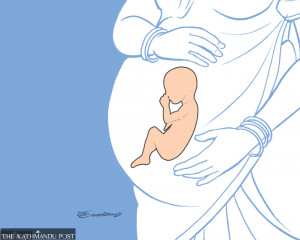Health
Mental health is a major public health concern—but it is still a neglected issue
Along with social stigma, there is also a lack of specialists and facilities for people suffering from mental problems
Arjun Poudel
Last month, a 26-year-old woman from Surkhet was brought to Kathmandu for psychiatric treatment.
Doctors at the Provincial Hospital in Surkhet had asked her in-laws to consult with a psychiatrist after finding that she was suffering from severe depression.
“The woman, a mother of two children, told me that she was not thinking straight and did not want to live anymore,” Dr Kapil Dev Upadhyay, a psychiatric consultant who had attended the patient, told the Post.
After counselling and medications, she was sent home. She visited Dr Upadhyaya’s clinic for the second time only recently.
“This time she was much better,” said Upadhyaya. “She said she had managed to overcome suicidal thoughts and wanted to do something for her children. There was a massive improvement in her condition.”
According to Upadhyaya, the woman was educated and from a well-to-do family which stood by her and sought treatment. But not everyone has the same background and support.
Experts on mental health say that in Nepal there is a tendency among people to conceal their mental health issues, largely due to the stigma attached to it that comes mostly because of a lack of education.
A recent study carried out by the Nepal Health Research Council shows that about 13 percent of the population suffers from some form of mental disorder.
“Results of the pilot study show that mental health is a huge public health problem in country,” said Megnath Dhimal, chief researcher at the Nepal Health Research Council, said.
According to Dhimal, a detailed study is being carried out across the country.
Nonetheless, mental health has remained neglected issue.
“Due to the entrenched social stigma, fear of discrimination and others, a lot of patients do not talk about their mental health issue,” said Dr Ananta Prasad Adhikari, also a psychiatric consultant at Nepal Mental Hospital. “And they do not seek treatment. As a result, most of the people continue to live with their problems.”
Nepal also does not have enough experts to deal with mental health problems. According to estimates, there are around 130 psychiatrists in the country and less than 30 are working in government hospitals. Most of the specialists are concentrated in urban centres, due to which people from the rural areas cannot avail of services.
“Poor patients of far-flung villages are still compelled to live in captivity. They are chained and do not receive any treatment,” said Dr Adhikari.
Panic disorder, agoraphobia, separation anxiety disorder, social phobia, substance use disorder, psychotic disorder, adjustment disorder, dissociative identity disorder, conversion disorder, epilepsy and others are the various types of mental health issues that is gripping Nepalis.
The World Health Organization says that one in four people in the world have been affected by mental or neurological disorders at some point of their lives and around 450 million people currently suffer from such conditions, placing mental disorders among the leading cause s of ill health and disability worldwide.
According to Dr Adhikari, patients having mental health problems hesitate to disclose their ailments and do not seek treatment. Families too hesitate to reveal due to fear of stigma.
“They even fear to take the name of our hospital if someone asked over the phone and tell they are in Patan Hospital,” he added.
The government has included some medicines of mental health problems in the essential drug list, which are distributed for free from government health facilities, but its implementation has been weak.
“How can we expect psychiatric psychology service in district hospitals when our entire province lacks psychiatric services?” Dr Gunaraj Awasti, director of Province Health Directorate told the Post. “People with even minor mental health problems are left with no option than to go to Kathmandu for treatment, spending thousands of rupees.”




 13.98°C Kathmandu
13.98°C Kathmandu














